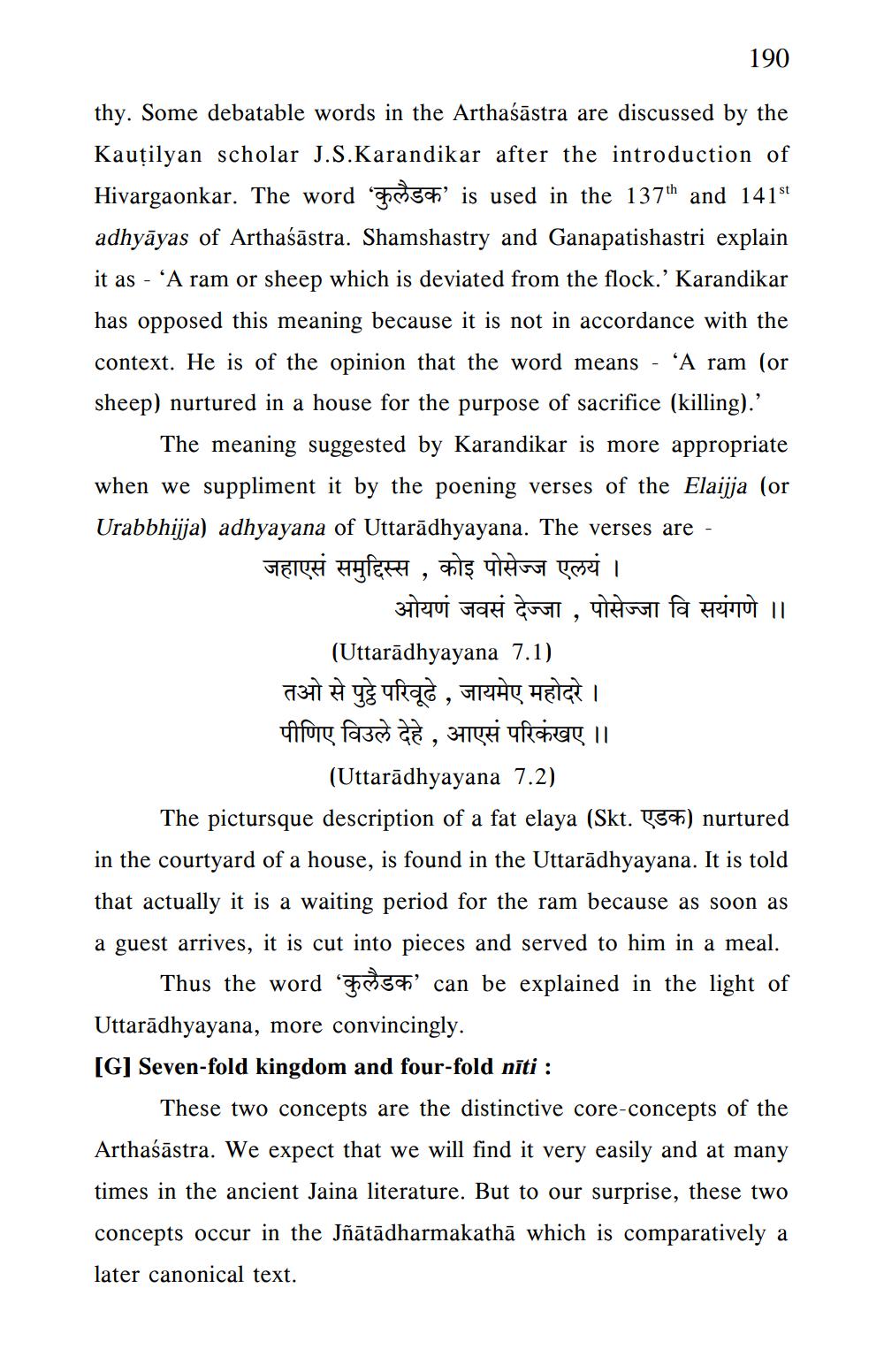________________
190
thy. Some debatable words in the Arthaśāstra are discussed by the Kautilyan scholar J.S.Karandikar after the introduction of Hivargaonkar. The word ' is used in the 137th and 141st adhyāyas of Arthaśāstra. Shamshastry and Ganapatishastri explain it as 'A ram or sheep which is deviated from the flock.' Karandikar has opposed this meaning because it is not in accordance with the context. He is of the opinion that the word means - 'A ram (or sheep) nurtured in a house for the purpose of sacrifice (killing).'
The meaning suggested by Karandikar is more appropriate when we suppliment it by the poening verses of the Elaijja (or Urabbhijja) adhyayana of Uttarādhyayana. The verses are - जहाएसं समुद्दिस्स, कोइ पोसेज्ज एलयं ।
ओयणं जवसं देज्जा, पोसेज्जा विसयंगणे ।। (Uttaradhyayana 7.1)
-
तओ से पुट्ठे परिवूढे, जायमेए महोदरे ।
पीणिए विउले देहे, आएसं परिकंखए ।।
(Uttaradhyayana 7.2)
The pictursque description of a fat elaya (Skt. ) nurtured in the courtyard of a house, is found in the Uttaradhyayana. It is told that actually it is a waiting period for the ram because as soon as a guest arrives, it is cut into pieces and served to him in a meal. Thus the word ‘कुलैडक’ can be explained in the light of Uttaradhyayana, more convincingly.
[G] Seven-fold kingdom and four-fold nīti :
These two concepts are the distinctive core-concepts of the Arthaśāstra. We expect that we will find it very easily and at many times in the ancient Jaina literature. But to our surprise, these two concepts occur in the Jñātādharmakathā which is comparatively a later canonical text.




